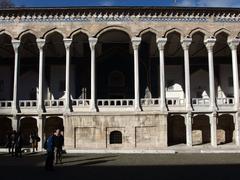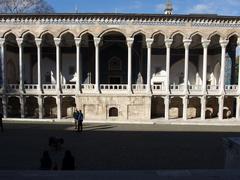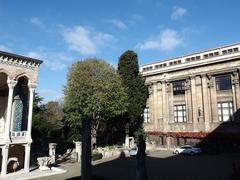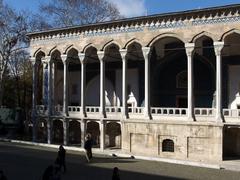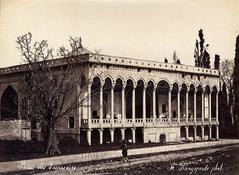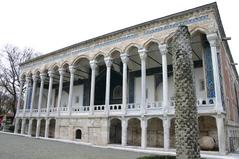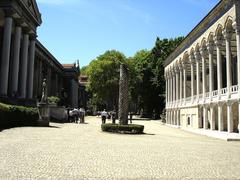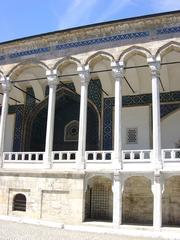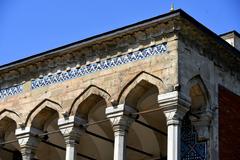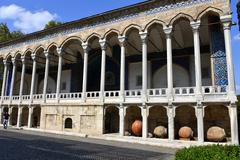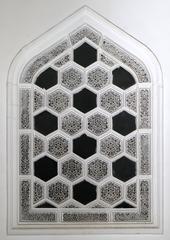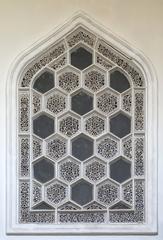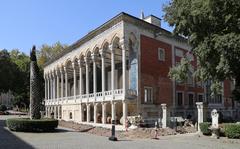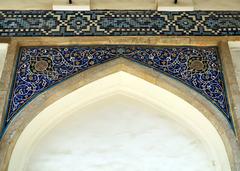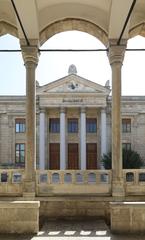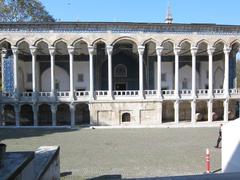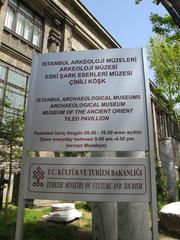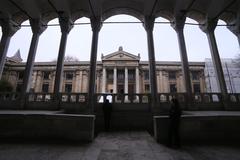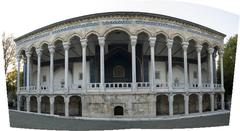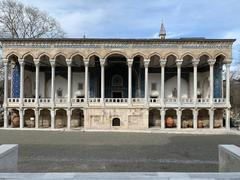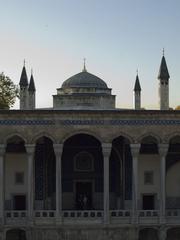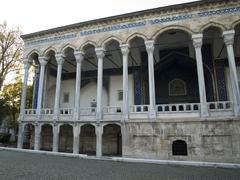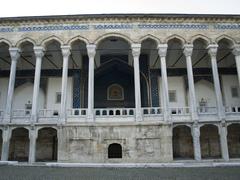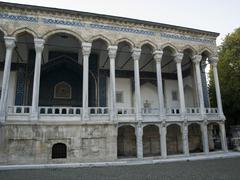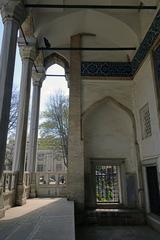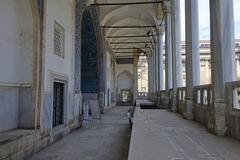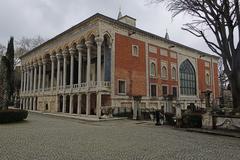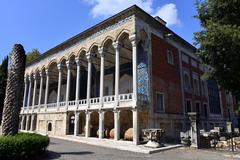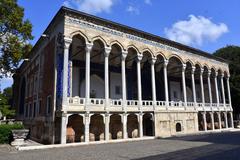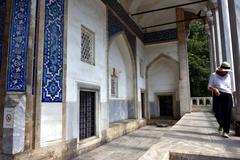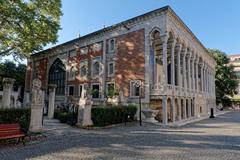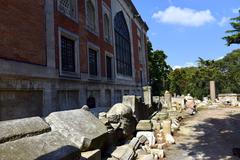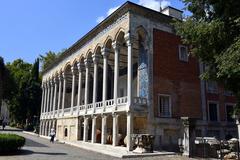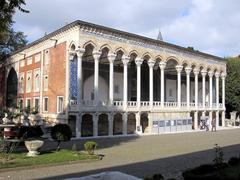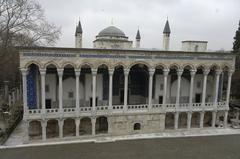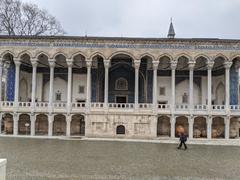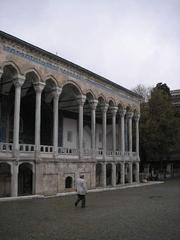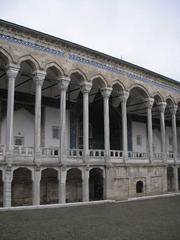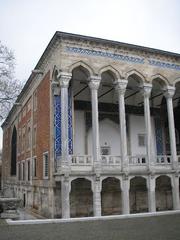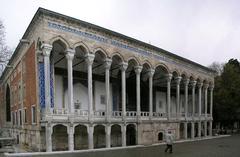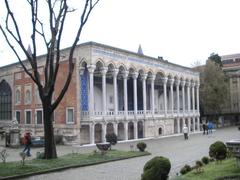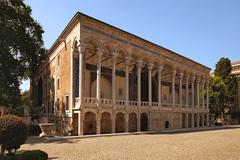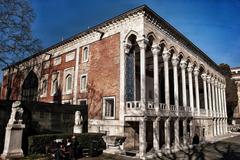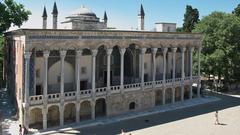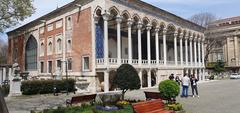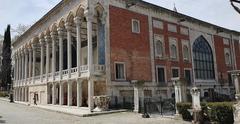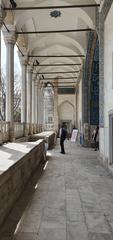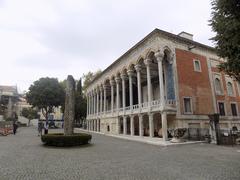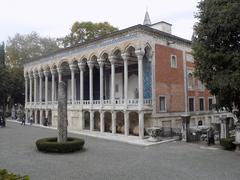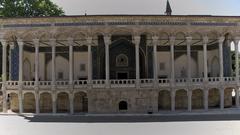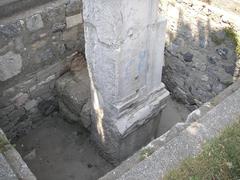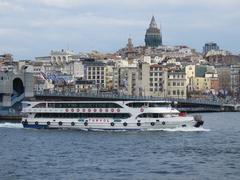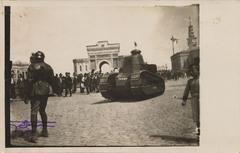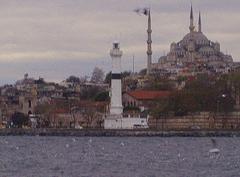
Comprehensive Guide to Visiting İstanbul Arkeoloji Müzeleri, Istanbul, Türkiye
Date: 31/07/2024
Introduction
The Istanbul Archaeology Museums, a gem nestled in the heart of Istanbul, offer an enriching journey through the annals of ancient civilizations. Comprised of three distinct buildings—the Archaeology Museum, the Museum of the Ancient Orient, and the Tiled Kiosk Museum—this complex houses approximately a million artifacts, making it a treasure trove for history enthusiasts and casual visitors alike (Nomadic Niko). Established in 1891 by imperial decree, the museums have since evolved into a significant cultural institution under the influence of notable figures like Osman Hamdi Bey, a prominent painter and archaeologist (Fodor’s). This guide aims to provide comprehensive information on the museums’ history, key collections, visitor tips, and nearby attractions, ensuring you make the most of your visit.
Table of Contents
- Introduction
- History and Development of Istanbul Archaeology Museums
- Expansion and Renovation
- Key Collections and Exhibits
- Visitor Information and Tickets for Istanbul Archaeology Museums
- Modern Developments
- Visitor Information
- Travel Tips and Nearby Attractions
- FAQ
- Conclusion
History and Development of Istanbul Archaeology Museums
Foundation and Early Years
The Istanbul Archaeology Museums were founded by imperial decree in 1891 to house the growing collection of archaeological artifacts discovered across the Ottoman Empire. Initially housed in the Aya İrini Church (Müze-i Humayun), the collection soon outgrew this space, prompting the construction of a dedicated museum building.
Osman Hamdi Bey’s Influence
The appointment of Osman Hamdi Bey as the museum’s director in 1881 marked a transformative period. A prominent painter and archaeologist, Hamdi Bey conducted significant excavations at sites like Mount Nemrut, Myrina, Kyme, and Sidon, where he unearthed the famous Alexander Sarcophagus.
Architectural Evolution
Construction of the museum building began in 1881 in the outer gardens of the Topkapi Palace. Initially designed with a neo-Greek façade, the museum complex now includes three buildings: the Archaeology Museum, the Museum of Ancient Orient, and the Tiled Kiosk Museum.
Expansion and Renovation
The museum’s collection continued to grow, necessitating further expansions. In 1991, the museum received the European Council Museum Award for its renovations and new displays, underscoring its commitment to preserving a diverse array of artifacts.
Key Collections and Exhibits
The Istanbul Archaeology Museums house around a million artifacts from various cultures and periods. Some notable collections include:
- The Alexander Sarcophagus: Featuring friezes of Alexander the Great, this fourth-century BC tomb remains a significant artifact (Nomadic Niko).
- Sarcophagus of Mourning Women: Depicts eighteen grieving women and is a celebrated piece in the museum’s funereal collection (Nomadic Niko).
- Statue of a Lion: Originating from the Mausoleum of Halicarnassus, one of the Seven Ancient Wonders of the World (Nomadic Niko).
- Ottoman Works: Includes coins, medallions, decorations, and a library of books (Nomadic Niko).
Visitor Information and Tickets for Istanbul Archaeology Museums
The museum complex is divided into three main sections:
- Museum of Archaeology: Houses artifacts from ancient civilizations like the Sumerians, Babylonians, and Hittites. Highlights include classical statues and a Thrace-Bithynia and Byzantium exhibition.
- Museum of Ancient Orient: Features artifacts from Mesopotamia, Egypt, and Arabia, including the Kadesh Treaty and the world’s first known love poem.
- Tiled Kiosk Museum: Displays ceramics and porcelain from the Ottoman period, noted for its collection of Iznik tiles.
Modern Developments
In recent years, the museum has incorporated modern technologies to enhance the visitor experience. The museum is closed on Mondays and has shorter opening hours during the winter. Combined tickets, including entry to the Topkapi Palace, are available for added convenience.
Visitor Information
Location and Accessibility
The museum is located in Cankurtaran, 34122 Fatih/İstanbul, and is easily accessible by public transport. The nearest tram stop is Gülhane istasyonu (T1 line), a 5-minute walk away. Visitors can also be dropped off at Gülhane Parki if arriving by taxi. The museum is a short walk from Hagia Sophia and the Blue Mosque.
Entrance Fees and Opening Hours
The entrance fee is €15 (520 TL as of March 2024), covering admission to all three museums within the complex. During the summer (1 April – 31 October), the museum is open from 09:00 to 20:00. In winter (1 November – 31 March), it is open from 09:00 to 18:30 (Nomadic Niko).
Travel Tips and Nearby Attractions
Travel Tips
- Consider purchasing a combined ticket for additional convenience.
- Plan your visit to avoid Mondays when the museum is closed.
- Utilize public transportation for easy access (Nomadic Niko).
Nearby Attractions
The museum’s proximity to Hagia Sophia and the Blue Mosque makes it an ideal addition to a day of sightseeing in Istanbul (Nomadic Niko).
FAQ
What are the opening hours of the Istanbul Archaeology Museums?
- Summer: 09:00 to 20:00 (1 April – 31 October)
- Winter: 09:00 to 18:30 (1 November – 31 March)
How much does it cost to visit the Istanbul Archaeology Museums?
- The entrance fee is €15 (520 TL as of March 2024).
Conclusion
The Istanbul Archaeology Museums offer a comprehensive and enriching experience for history enthusiasts, art lovers, and curious visitors alike. Download our mobile app, check out related posts, or follow us on social media for the latest updates (Nomadic Niko).
References
- Nomadic Niko, 2022, Nomadic Niko source url
- Fodor’s, 2022, Fodor’s source url
- Wikipedia, 2022, Wikipedia source url
